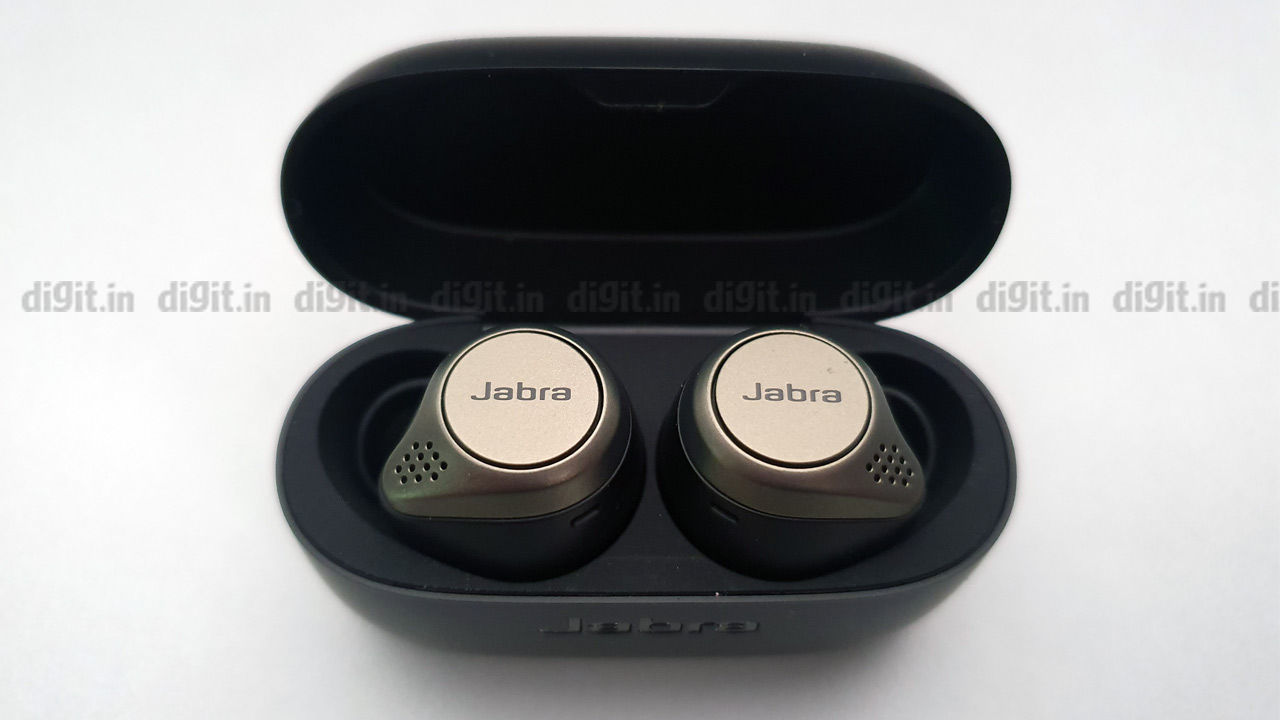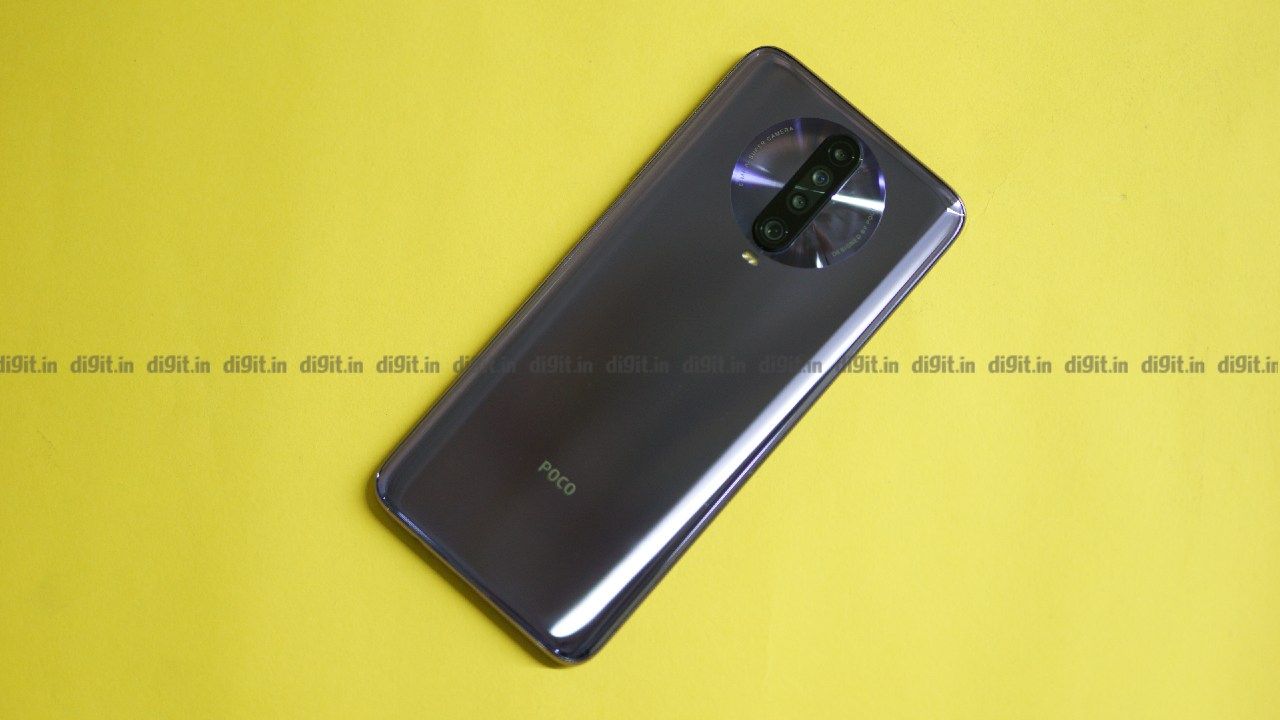
If you have checked Tech Twitter even once in the past few months, a burning question amidst everyone’s mind was where the hell is the Poco F2? Was Poco done after launching one of the cheapest flagship smartphones? Turns out, the answer is no. We still don’t know where the Poco F2 is, but we do have a certain Poco X2 to talk about. That’s the new smartphone that the now-independent brand launched earlier this month, and after using it for a few weeks, here’s our in-depth review —
Performance
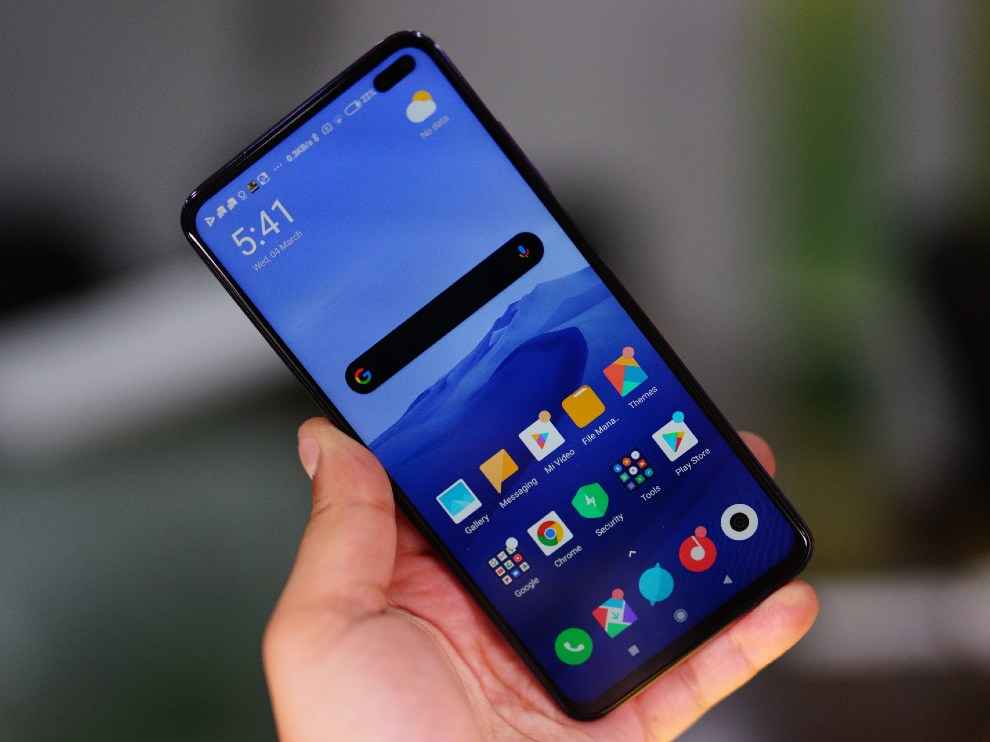
Like we said, this isn’t a successor to the Poco F1, and as a result, doesn’t have a flagship chipset. Is that a compromise? That depends upon your expectations. Powering the phone is the Qualcomm Snapdragon 730G, a gaming-centric 7-series SoC that’s been paired with up to 8GB LPDDR4X RAM and 256GB UFS 2.1 storage. Good enough hardware, but isn’t that exactly what the Realme X2 also offers? Not that we’re complaining (the Poco X2 is more affordable than the Realme X2 starting from Rs 15,999), but it does beg for a comparison. Interestingly, only the CPU benchmarks were allowed to run while GPU testing apps like 3DMark and GFXBench were locked down. So our benchmark analysis will be incomplete.
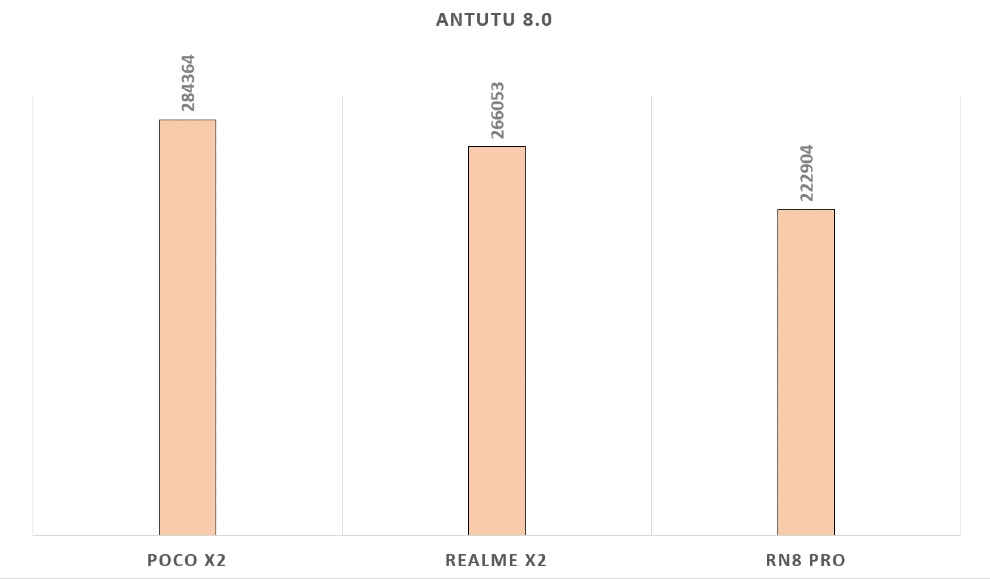

With the limited number of benchmarks apps that were unlocked, it looks like the Poco X2 offers the best CPU performance in this segment, but only by a small margin. The Realme X2 and the Redmi Note 8 Pro are not very far behind, and it’s likely due to optimisations in place that the Poco X2 manages to post a higher score. Then again, the company decided to lock down the GPU benchmarks which doesn’t instill much confidence in a device that’s pegged to be great at gaming. Without those numbers, it’s difficult to state where the Poco X2’s GPU performance stands in this segment.
Gaming
Gaming on the Poco X2 should have been far more superior than other smartphones in this segment, but that doesn’t seem to be the case. It supports all games other phones in this segment does, and at a similar graphics level, but with the Snapdragon 730G in place, we expected higher frame rates and better stability numbers (as seen on the Realme X2), but the reality is far from it.
We played a host of games including the popular ones like PUBG Mobile and COD: Mobile as well as some of the games which Poco claimed will support the high-refresh rate display. Both COD: Mobile and PUBG Mobile failed to hit peak frame rates of even 60fps. PUBG Mobile went up to 30 FPS while COD: Mobile hit 56 FPS. However, while PUBG Mobile still ran at a high 90 percent stability, COD: Mobile’s stability was at an appalling 45 percent.
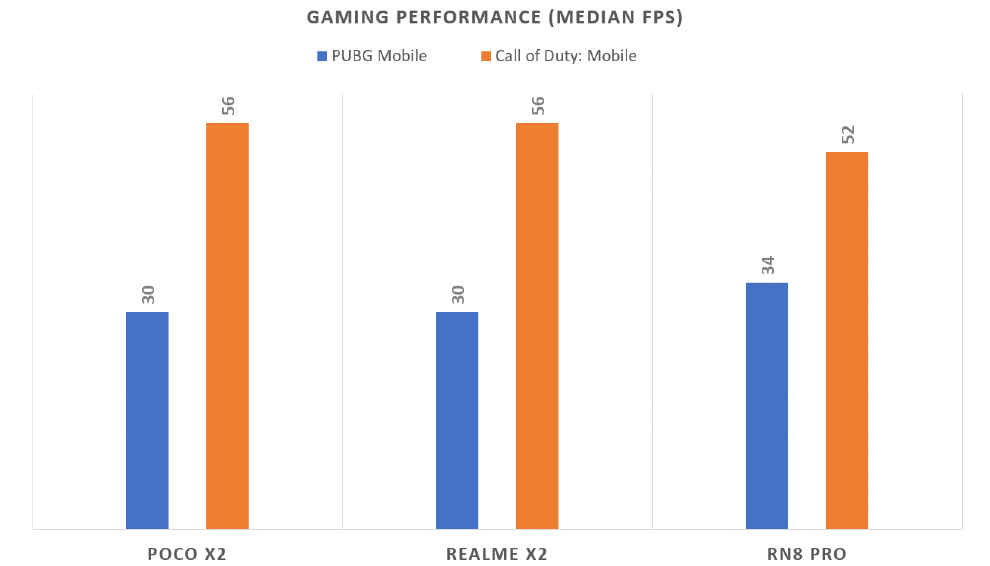
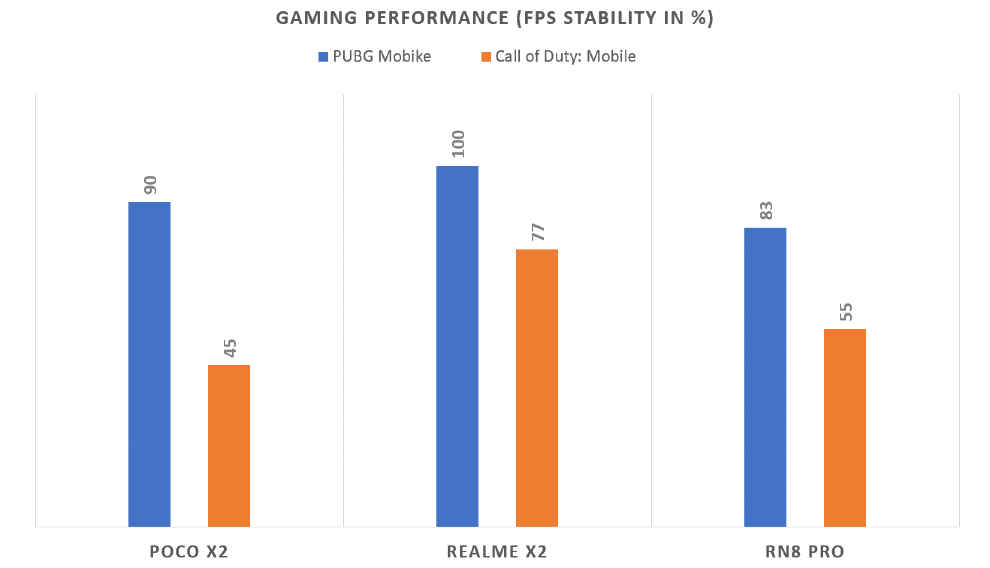
None of the games we played managed to go beyond 60 FPS, thereby rendering the 120Hz refresh rate display pointless when it comes to gaming. Poco did outline around 35 games that support 120 FPS in general, but we did not see that emulate in the Poco X2 yet. In a statement to Digit.in, Poco said app developers have to enable support for higher refresh rate displays. Yet, almost a month down the launch, no one seems to be interested in doing so.
Having said that, gaming on the phone does not really put all that much stress on the device. We did not notice the phone heating up uncomfortably or slowing down after prolonged period of gaming. Even the average CPU usage while gaming stayed around 11-12%, which makes it clear the Poco X2 is not making use of all that much resources that it’s advertising, while gaming.
Software
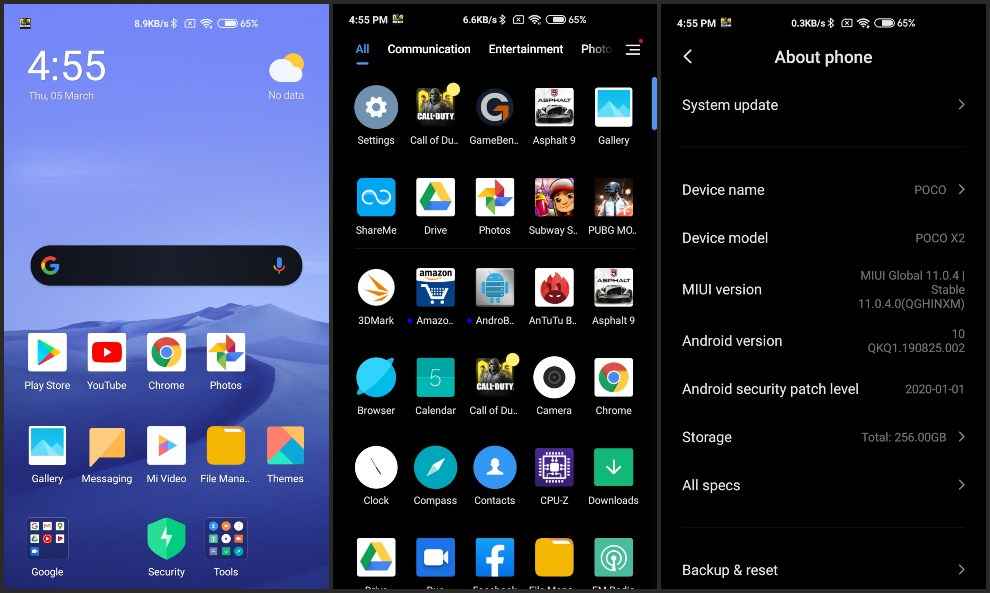
The software is a big red flag in recommending the device. Not that it’s not fast and smooth and easy to operate. But if you are buying this device for children and teens, do note that the Poco UI (and MIUI in general) will bombard your notifications panel with ads that are outright obscene and in some cases outrageously bigoted and misogynistic. There are a bunch of bloatware apps which also send push notifications despite not being logged in to any account once again adding to an already long list of apps pushing ads in the UI. We have a video of the same attached.
Leaving that aside, the Poco UI is minimal, fast and supports the 120Hz refresh rate display. The UI is incidentally the only place where the high refresh makes a positive impact. However, since I have been using the ROG Phone II as my primary for a while now, there seems to be a small gap in the high refresh rate experience in comparison, which could be because of a slower processor on the Poco X2. Scrolling especially, is not as smooth as the ROG Phone II.
Battery Life
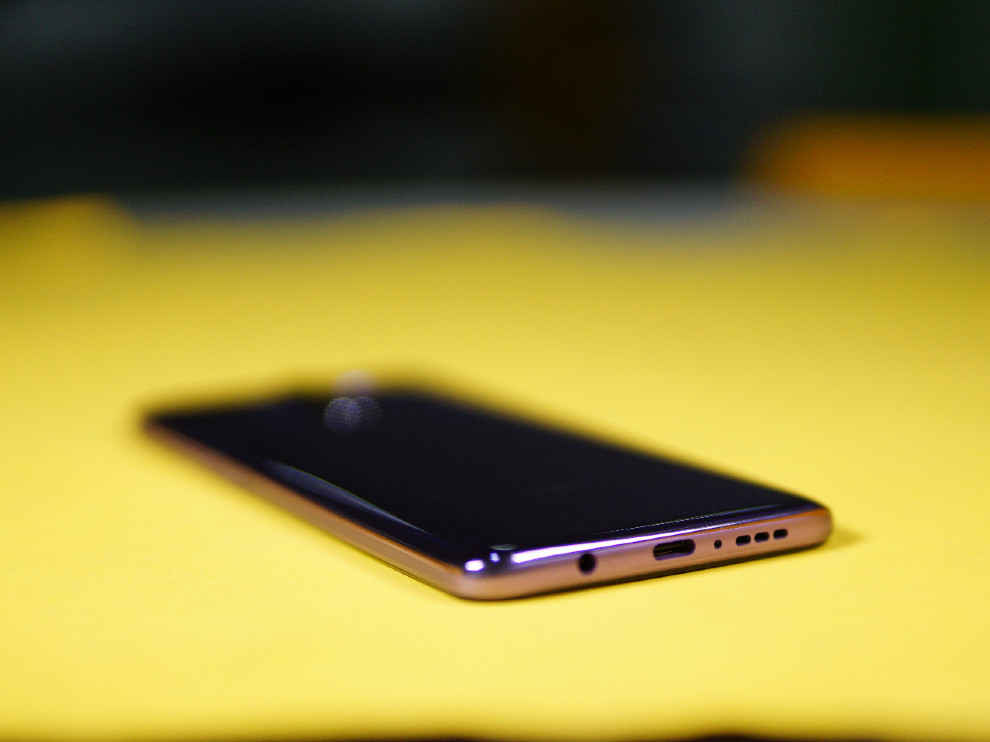
The Poco X2 rocks a 4500mAh battery under the hood, the same size as the Redmi Note 8 Pro. The battery life, however, is slightly longer from the same battery. In our video loop test, the Poco X2 lasted a good 14 hours 21 minutes while 15 minutes of COD: Mobile and 30 minutes of Netflix drained the battery by 4 percent and 5 percent respectively.
The Poco X2 also comes with a 27W charger out of the box which is something rare to see in this segment. The charging adapter is pretty big though but tops up the battery to full capacity in a little over an hour.
Camera
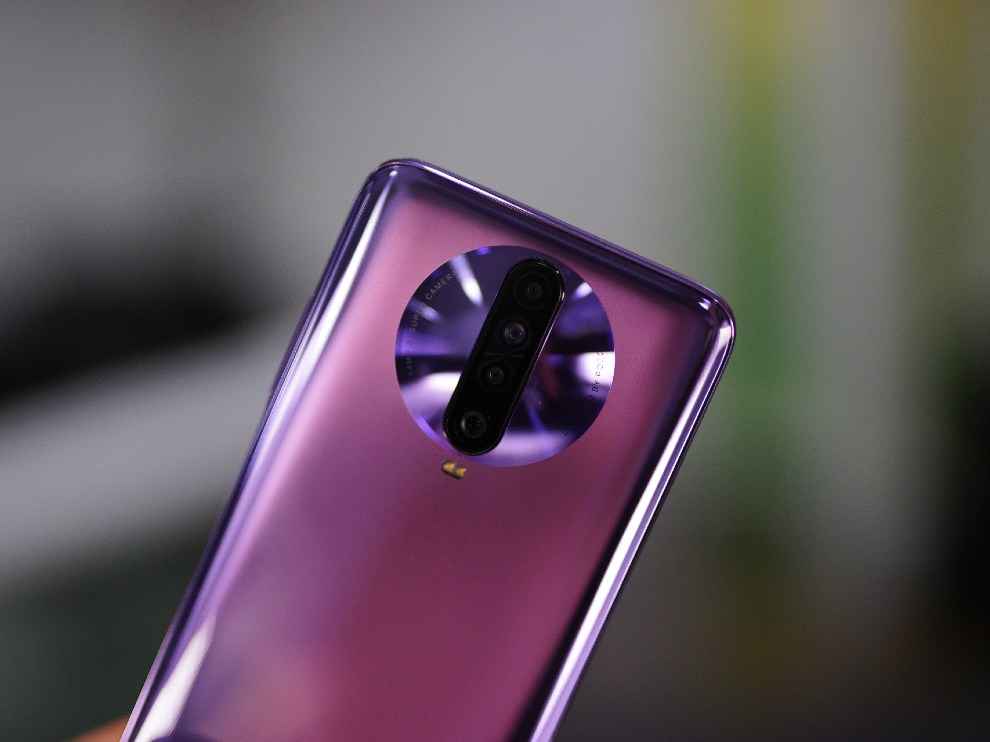
64 megapixels is the flavour of the season and quite expectedly, the Poco X2 packs a 64MP camera in the quad camera stack. Only, while everyone else has been using the Samsung GW-1 sensor, the Poco X2 relies on the new Sony IMX686 sensor. While details about the new sensor are still unknown, we know that it’s larger than the 1/2” IMX586 sensor and measures at 1/1.7” while the lens has an aperture of f/1.9. There’s another 8MP ultrawide lens with f/2.2 aperture and two 2MP lenses for macro photos and depth sensing respectively. And on the front, there are two punch-hole cameras including a 20MP selfie shooter and an accompanying 2MP depth sensor.
We took the camera out for a spin where we tested the performance in the day, low-light, indoors and macro. Here’s what we found —
16MP shots
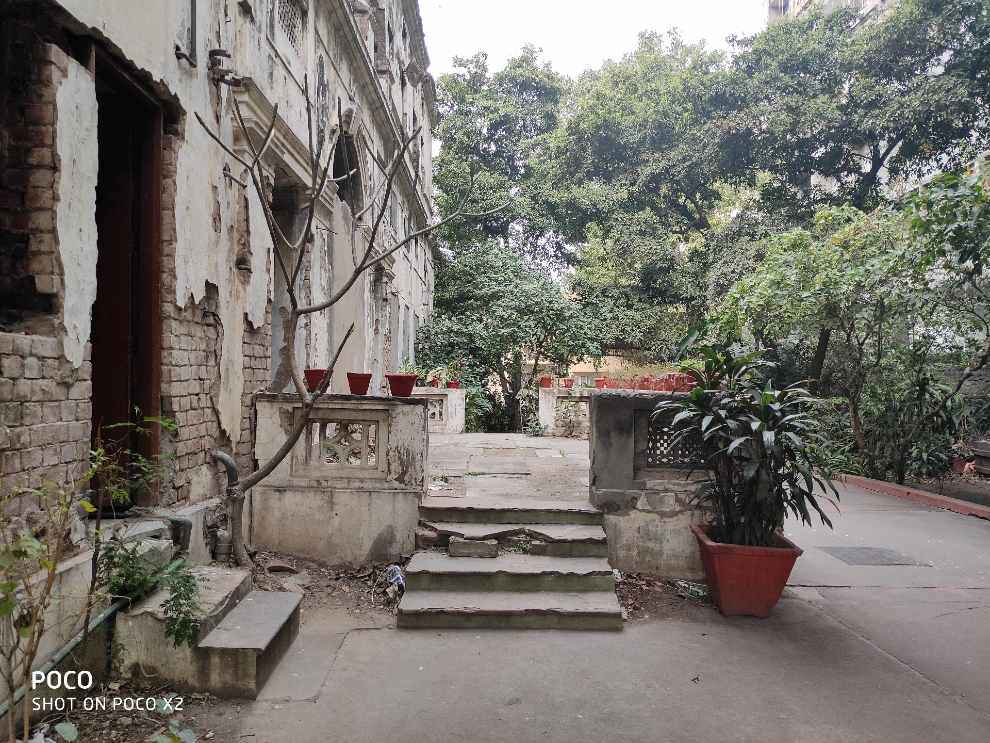

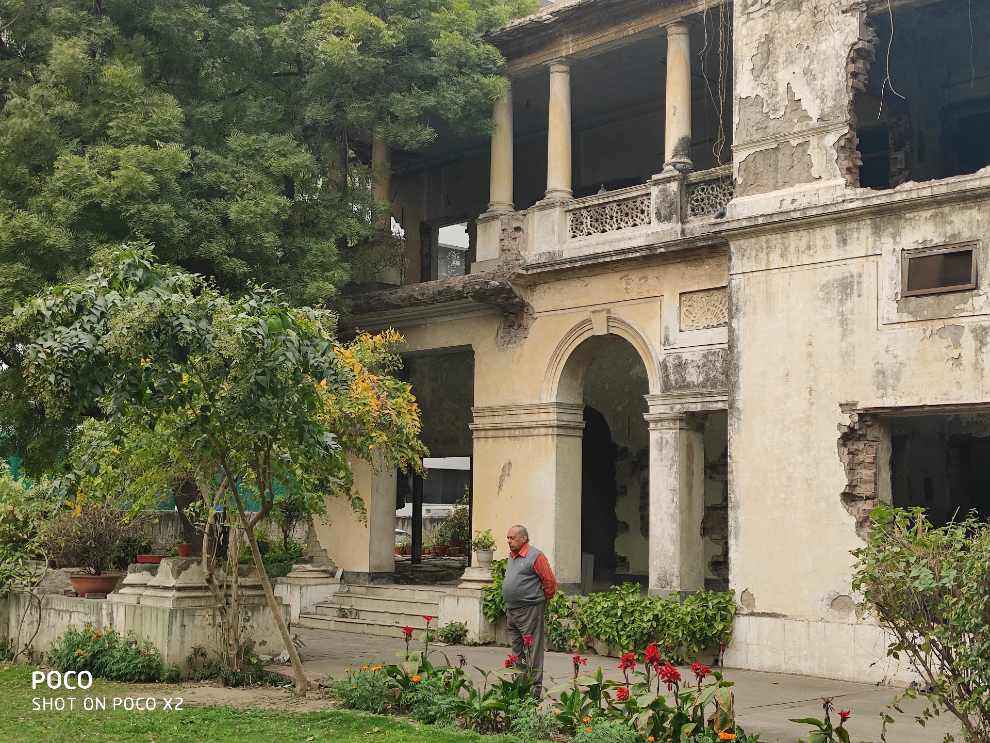
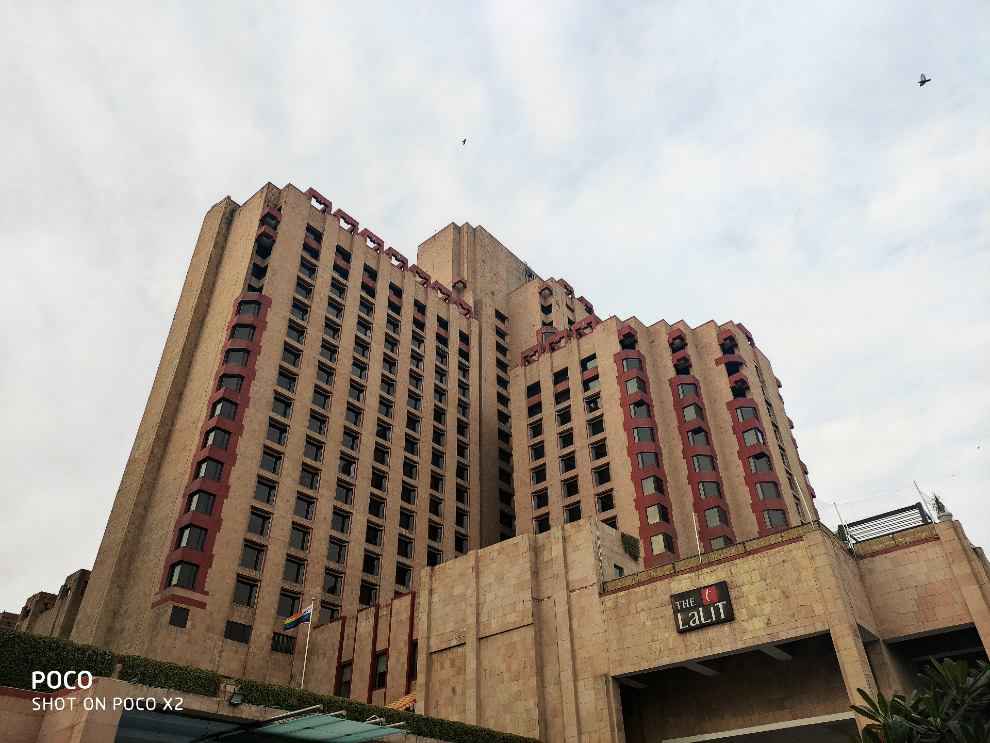
The 64MP sensor, like the previous hi-res sensors performs 4-in-1 pixel binning to bring down the resolution and the file size, and improve sharpness and details. The images we shot demonstrate this effect in some cases, but in others, the results wildly vary. That’s primarily because of the AI scene recognition working in the background enhancing the contrast and saturation. So in some cases like the shot of the flower come out nice and crisp with lots of details, but in case of the dilapidated building, everything looks far too over processed. The over processing becomes clearer when you look at the dense leaves in the top right corner third sample. Zoom in and you can see the artificial processing the phone does which may not be up to everyone’s taste.
64MP shots


(100% cropped)

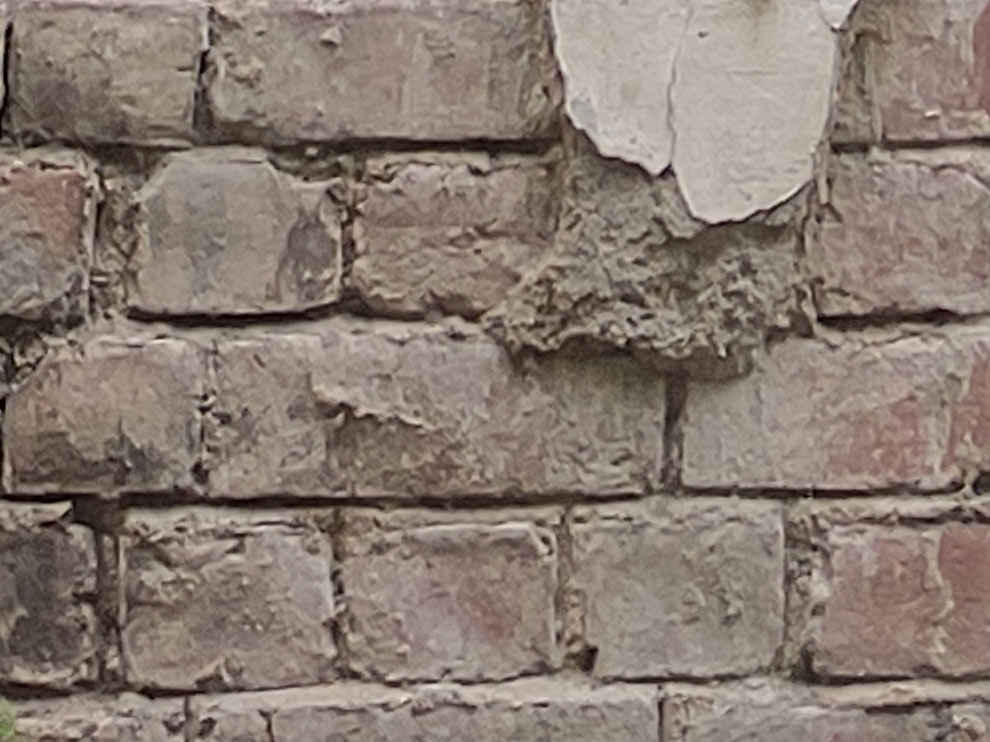
(100% cropped)
The good thing about the 64MP sensor is that now there’s very little variance between the binned 16MP image and the 64MP image in terms of colour reproduction, dynamic range and white balance. However, while 64MP shots do carry more details, it lacks the sharpness seen in the 16MP photos. Having said that, you need a little more patience while shooting at 64MP. The camera takes a good 3-4 seconds to process the shot before taking another photo, so there’s always some downtime when shooting in that mode. Also note that the 64MP sensor easily takes up around 35-40MB space for every image.
Low light

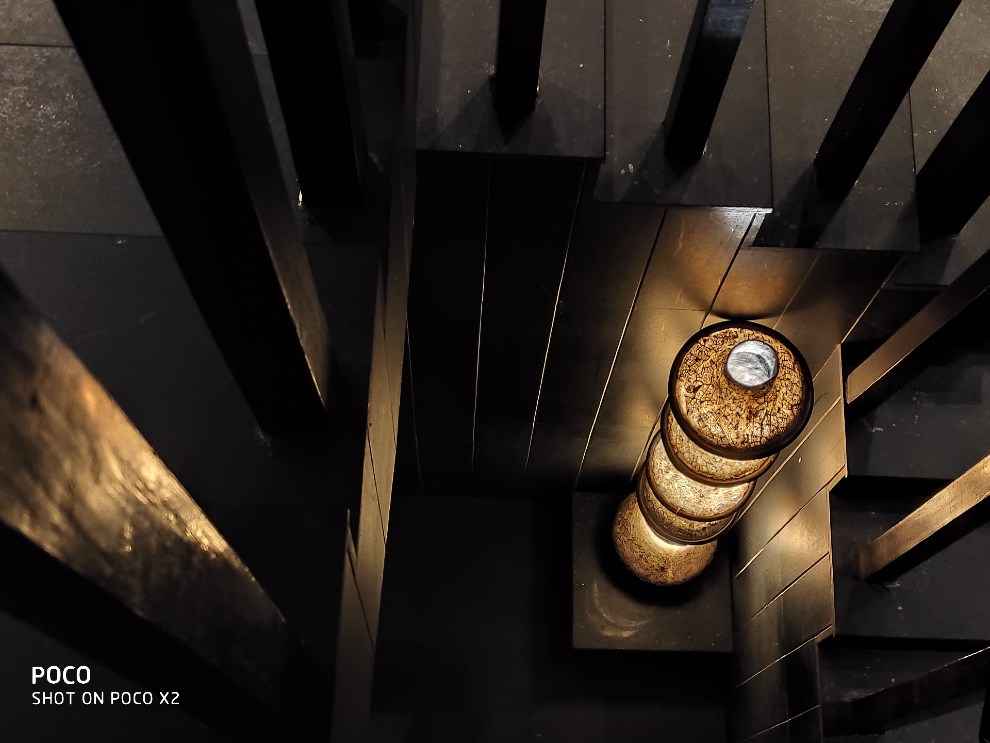

The dedicated night mode is pretty good. It follows the same principle of fusing multiple images together and it’s seemingly faster than the previous generation night mode. A big downside is you can only capture stationary objects using the night mode. Also, only the primary sensor and the telephoto camera support nightmode. The resulting images show accurate colours, and little noise. The dynamic range is not so good and you will have dark areas with no details.
Macro lens



The 2MP macro lens performs the poorest among the four lenses. While the images look sharp, they hardly carry any detail. It’s also only good for using when there’s enough light. The aperture is just too small to use in low-light. Furthermore, the macro lens shows a big shift in colour from the primary and wide-angle lens. Check out the video of the same below —
Design and Display
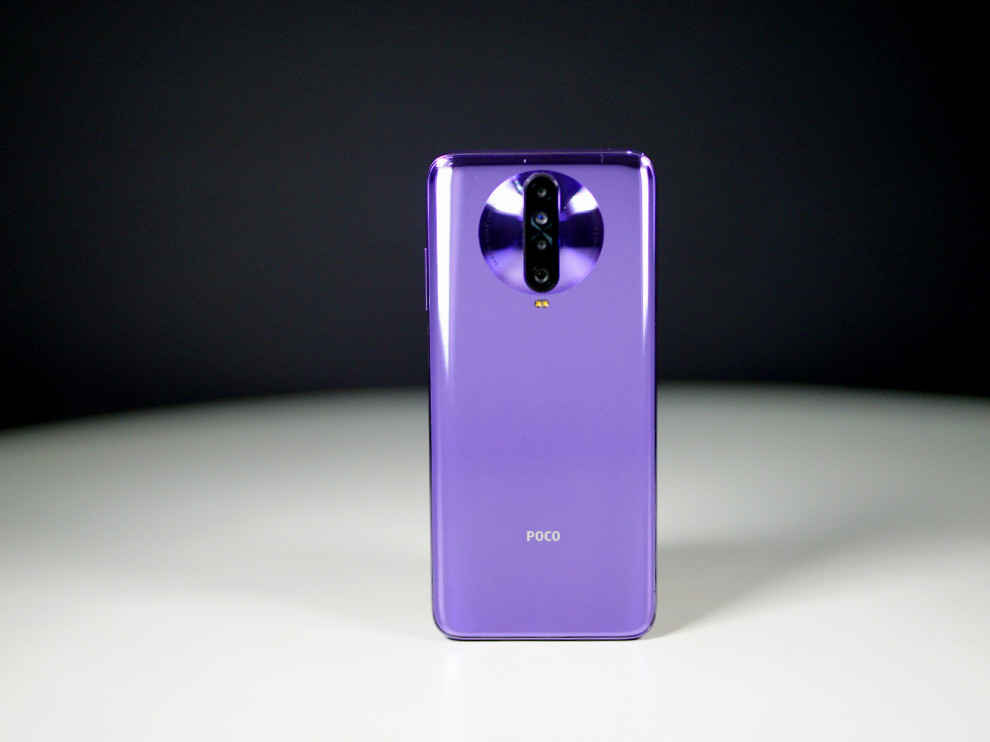
The Poco X2’s design completely gives away the fact that this is indeed the Redmi K30 rebranded. The design is exactly identical, but that shouldn’t be a problem for buyers in India since the Redmi K30 isn’t launching here anytime soon. So you still get a unique design that uses Gorilla Glass 5 on both sides along with nicely curved edges and a rather big body. Yes, the Poco X2 is even larger than the Redmi Note 8 Pro and the Realme X2, and using it one-handed is going to be really difficult unless you have abnormally large hands.
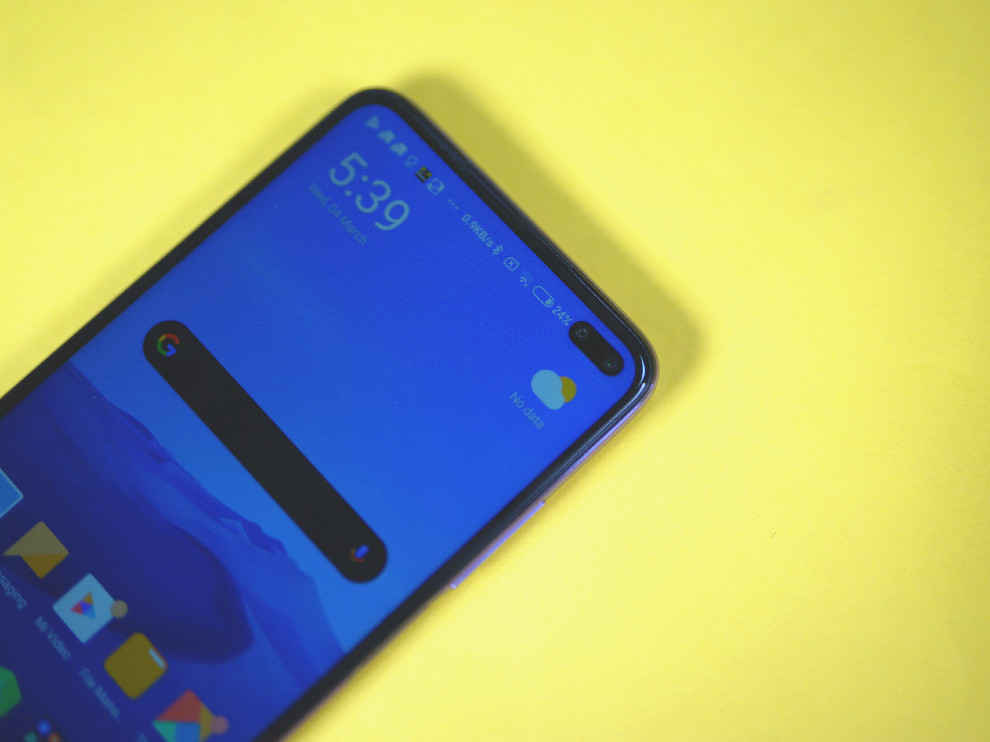
The display, on the other hand, is quite unique. The Poco X2 features an 6.67-inch IPS LCD display with a 120Hz refresh rate. But other than the UI, you won’t have any other apps supporting the high refresh rate and getting smoother. You can downgrade the panel to 60Hz but the 120Hz mode doesn’t consume too much battery. As for panel brightness, we measured 576 lux under direct sunlight, while indoors the brightness went down to a minimum 6 lux.
Bottomline
The Poco X2 feels more like a knee-jerk reaction to the competition rather than a product conceived through a thought-out product plan. The 120Hz refresh rate display is something really good to see in this segment, but as of now, there’s not much you can do with it. So buying this smartphone just for that display is moot. Having said that, the Snapdragon 730G at a price of Rs 15,999 is pretty amazing. The performance chops it brings to the table can be harnessed to support just about any game or app right now. The camera setup needs more polish which we hope gets improved with future updates, but it’s really the software and the menace of unsolicited notifications that mars the experience, to the extent that it becomes hard to recommend this phone to our readers. The Poco X2 ticks all the boxes in the spec-sheet, but ultimately fails to deliver a hassle-free experience.
[ad_2]
Source link

